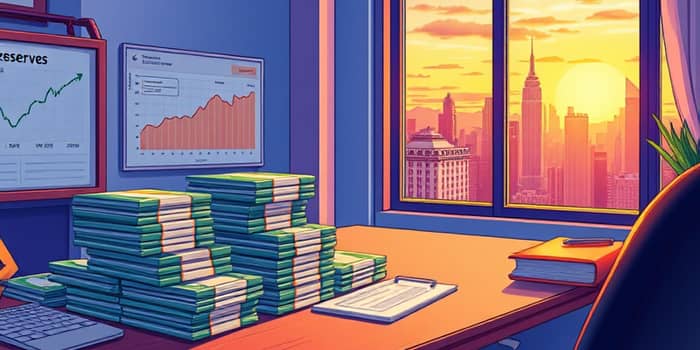
Maintaining a robust cash buffer is not just about surviving unexpected shocks—it’s about seizing opportunities when they arise. In a world of market volatility, credit constraints, and shifting economic tides, having liquid reserves offers both security and flexibility. Whether you’re an individual investor navigating retirement withdrawals or a business leader evaluating strategic acquisitions, the concept of a cash buffer deserves your close attention.
A cash buffer represents the minimum level of cash held to cover essential outflows in any scenario. It functions as a financial safety net, ensuring that day-to-day requirements are met even during unforeseen events. For organizations, this means avoiding liquidity crises; for individuals, it translates into peace of mind.
Beyond risk management, a well-calibrated cash buffer unlocks a host of tactical advantages. When markets dip, those with liquid reserves can buy assets at discounted prices without incurring sequence of returns risk. Instead of selling equities in a downturn, you hold fast—ready to deploy funds into beaten-down opportunities.
Moreover, businesses with available cash can execute timely acquisitions, launch new products, or expand operations without resorting to expensive financing. In all cases, liquidity becomes a powerful strategic weapon rather than a static safety net.
There is no one-size-fits-all rule. Buffer size depends on several interrelated factors:
For individuals, financial planners often recommend holding two to four months of expenses in cash. Retirees might keep two years’ worth of spending liquid, while investing the remainder for growth. Businesses may calculate their buffer by dividing bank balances by monthly outflows to measure how long they could operate without additional revenue.
Let’s explore how different stakeholders benefit from strategic cash reserves.
Property investors face vacancy risks, repair costs, and tenant turnover. By keeping a buffer equivalent to several months of mortgage payments and maintenance expenses, they avoid distress sales when unexpected repairs arise.
Retirees worry about portfolio drawdowns during bear markets. Holding a dedicated cash reserve for withdrawals prevents selling equities at depressed prices, thereby protecting long-term nest egg performance.
While often used interchangeably, cash buffer and cash runway serve distinct purposes. The buffer gauges resilience in a no-revenue scenario; the runway estimates longevity at current burn rates assuming ongoing inflows.
Establishing a formal policy is essential for consistent governance. Organizations often centralize reserves via a treasury account to optimize oversight. Individuals can automate contributions to a high-yield savings account or money market fund.
Once the target buffer is reached, any surplus cash can be deployed into higher-yielding investments. However, it’s critical to differentiate between your core buffer and investable surplus for higher returns, ensuring you never dip below your safety threshold.
Underestimating buffer needs leaves you vulnerable to liquidity crunches, emergency sell-offs, or missed opportunities. Conversely, hoarding too much cash carries an opportunity cost of idle cash, potentially eroding purchasing power when inflation rises and reducing overall portfolio returns.
Crafting the ideal cash buffer is an exercise in balancing resilience with growth. By analyzing revenue volatility, expense unpredictability, access to credit, and personal risk appetite, you can define a reserve that safeguards against crises while keeping you poised for tactical moves.
In today’s dynamic markets, liquidity is more than a passive shield—it’s an active strategy. Armed with the right cash buffer, you can confidently navigate uncertainty and capitalize on the world’s most compelling opportunities.
References













